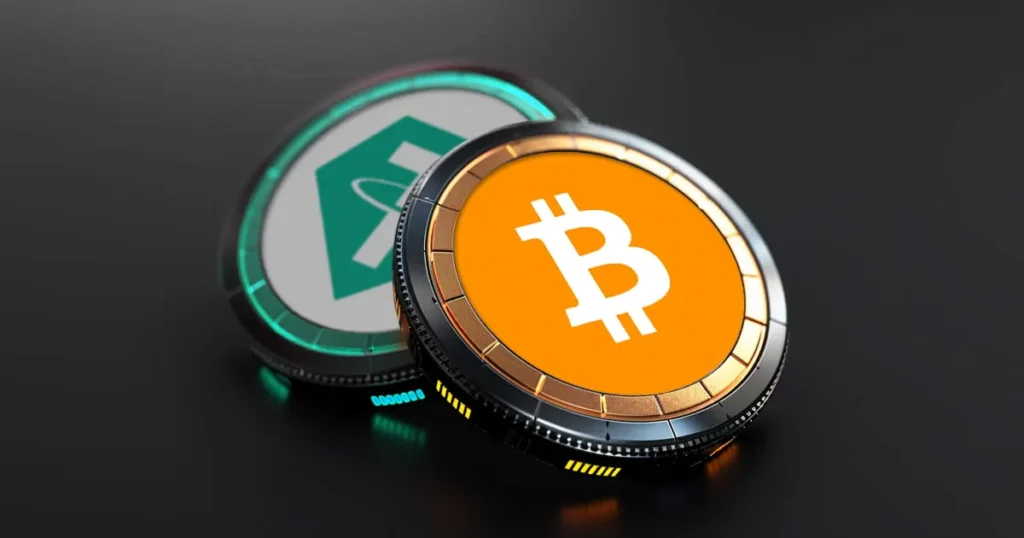Introduction
Blockchain adoption is exploding—DeFi, gaming, AI networks, tokenized assets, and real-world applications are onboarding millions of users. Yet the biggest challenge remains unchanged: blockchains struggle to scale without sacrificing decentralization or security. This is where the conversation around Layer 1 vs Layer 2 becomes critical.
Layer 1 blockchains (L1) like Bitcoin, Ethereum, Solana, and Cardano form the foundation of the crypto ecosystem. But even the best L1s face throughput limits. To solve this, Layer 2 scaling solutions (L2) were built on top of L1s, allowing blockchains to process more transactions at lower costs—without compromising security.
Understanding the difference between Layer 1 and Layer 2 is essential for anyone involved in crypto—developers, investors, traders, or users.
Layer 1 vs Layer 2 Comparison Table
| Features | Layer 1 (L1) | Layer 2 (L2) |
|---|---|---|
| What Is It | Base blockchain that handles on-chain transactions | Scaling solution built on top of L1 |
| Examples | Bitcoin, Ethereum, Solana, Cardano | Arbitrum, Optimism, zkSync, Lightning Network |
| Speed | Slow–Moderate (7–5,000 TPS depending on L1) | Fast (thousands of TPS) |
| Fees | Higher under congestion | Very low due to batching/rollups |
| Scaling Method | Block size changes, sharding, consensus upgrades | Rollups, channels, sidechains |
| Security | Highest—native blockchain-level security | Derives security from L1 (except sidechains) |
| Throughput | Limited; bottleneck at base layer | High; settles batches of transactions |
| Best For | High-value settlement, decentralization, finality | DeFi, trading, gaming, microtransactions |
Layer 1: The Base Blockchain

Layer 1 is the foundational layer where transactions are processed and validated. It sets the rules, consensus mechanism, and security guarantees.
Key Characteristics
- Complete responsibility for transaction validation
- Native security through PoW or PoS
- Higher decentralization
- Lower scalability compared to off-chain solutions
- Gas/transaction fees tied to on-chain demand
L1 Scaling Solutions
To improve throughput, Layer 1 chains use:
1. Sharding
Breaking the blockchain into smaller parts to process transactions in parallel.
2. Consensus Upgrades
Examples: Ethereum’s transition from PoW to PoS to reduce energy usage and improve efficiency.
3. Block Size Increases
Higher data capacity per block (e.g., Solana’s high throughput design).
Pros of Layer 1
- Highest level of security
- Fully decentralized settlement layer
- Immutable and censorship-resistant
- Serves as the final settlement for L2s
Cons of Layer 1
- Limited throughput
- High fees during network congestion
- Slow upgrade cycles
- Not ideal for mass-scale apps like gaming or microtransactions
Layer 2: Scaling Solutions Built on Top of Layer 1
Layer 2 solutions are designed to reduce the load on Layer 1 by processing transactions off-chain or in batches, then settling them on the base chain.
Key Characteristics
- Move computation off-chain
- Settle proofs or bundled data on Layer 1
- Offer ultra-fast and low-fee transactions
- Derive security from L1 (for rollups)
- Ideal for scalable dApps
Types of L2 Solutions
1. Optimistic Rollups
Assume transactions are valid unless challenged.
Examples: Arbitrum, Optimism.
2. ZK-Rollups
Use zero-knowledge proofs to verify correctness instantly.
Examples: zkSync, StarkNet.
3. State Channels
Off-chain communication channels between two parties.
Examples: Lightning Network.
4. Plasma Chains
Child chains periodically committing data to L1. Less used today.
Pros of Layer 2
- Extremely low fees
- High throughput for millions of users
- Inherit L1-level security (rollups)
- Enable real-time applications (gaming, payments)
- Reduce congestion on base chains
Cons of Layer 2
- Withdrawals from rollups may take time (Optimistic Rollups)
- Some L2s sacrifice decentralization (e.g., certain sidechains)
- Fragmented liquidity across networks
- Added complexity for users
Why the Difference Matters
The Layer 1 vs Layer 2 blockchain debate exists because:
1. Layer 1 Alone Cannot Scale
If everything happens on L1:
- Network congestion increases
- Fees skyrocket (Ethereum gas wars)
- Speed slows down
- Decentralization suffers if block sizes grow too large
2. Layer 2 Is Essential for Mass Adoption
L2s allow:
- Gaming
- DeFi with low fees
- Real-world payments
- High-frequency trading
- AI + blockchain workflows
3. Real-World Examples
- Ethereum gas fees dropping from $50+ to cents on L2s
- Lightning Network enabling near-instant Bitcoin transactions
- Arbitrum/Optimism onboarding millions into DeFi
Together, L1 provides security, and L2 provides scalability.
When to Use Layer 1 vs Layer 2
Use Layer 1 When:
- You need maximum security
- You’re transferring large amounts
- Making final settlements
- Running a validator or staking
Use Layer 2 When:
- You want low fees
- You’re trading on DEXes
- Using DeFi apps frequently
- Playing blockchain games
- Minting or transferring NFTs cheaply
Conclusion: The Future of Layer 1 and Layer 2
The future of blockchain is modular. Layer 1 blockchains will focus on delivering strong security and decentralization, while Layer 2s will deliver the speed and scale needed for billions of users.
Ethereum’s roadmap (Danksharding + Rollups), Bitcoin’s Lightning Network growth, and emerging modular blockchains like Celestia and EigenLayer show that the ecosystem is moving toward a layered architecture.
L1 and L2 are not competitors— they are partners.
Their synergy will shape the next decade of blockchain adoption.
FAQs: Layer 1 vs Layer 2
1. Is Layer 2 always faster than Layer 1?
Yes, because computation happens off-chain while final settlement occurs on L1.
2. Do Layer 2s depend on Layer 1 for security?
Rollups do, but sidechains have independent security models.
3. Is Polygon a Layer 2 or a sidechain?
Polygon PoS is considered a sidechain, but Polygon zkEVM is a true L2 rollup.
4. Why not upgrade Layer 1 instead of building Layer 2?
Upgrading L1 compromises decentralization. L2 allows scaling without sacrificing security.
5. Will Layer 2 replace Layer 1?
No. L1 remains the settlement layer; L2 handles user activity.
Do read our article on modular blockchains here.
Get the news in a Jist. Follow Cryptojist on X and Telegram for real-time updates!




 Bitcoin
Bitcoin  Ethereum
Ethereum  Tether
Tether  XRP
XRP  USDC
USDC  Wrapped SOL
Wrapped SOL  Lido Staked Ether
Lido Staked Ether  TRON
TRON  Dogecoin
Dogecoin